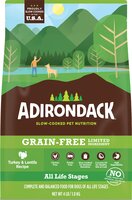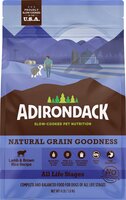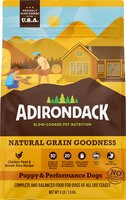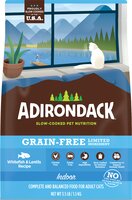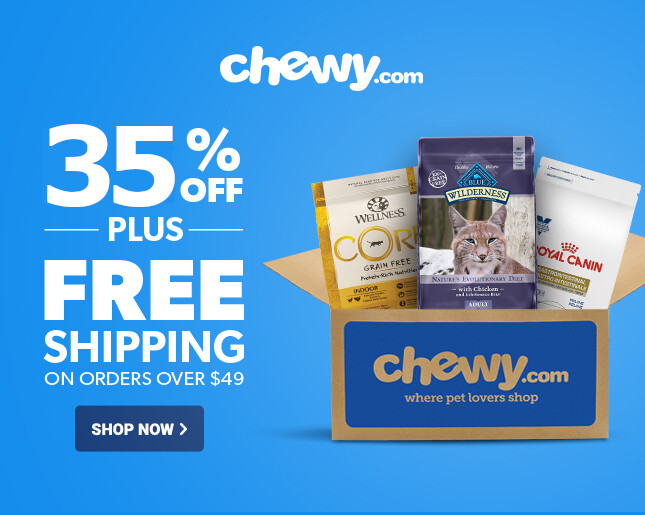
Ultimates vs. Adirondack
In this comparison article for Ultimates vs Adirondack, we'll highlight the key differences between these two pet food brands. To properly compare Ultimates and Adirondack, we'll use up-to-date nutritional and price information.
There are many factors to consider when choosing the best pet food brand for your pet. Factors such as ingredient quality, guaranteed analysis, product safety, brand history, and cost are among the most important factors to consider.
Throughout this Adirondack vs Ultimates comparison, we've utilized average data to make general comparisons. If you'd like to see individual product reviews, visit our Ultimates Review Page or Adirondack Review Page.
Guaranteed Analysis: Adirondack vs. Ultimates
According to AAFCO, all pet food labels must provide a guaranteed analysis of nutrient content. The analysis must provide guaranteed minimum percentages of crude protein and crude fat, and maximum percentages of crude fiber and moisture.
All percentages used in this comparison are averages reported on a dry matter basis.
Ultimates Dog Food vs. Adirondack Dog Food
| Dry Dog Food | Ultimates | Adirondack |
| Crude Protein | 26.3% | 28.6% |
| Crude Fat | 14.9% | 16.7% |
| Crude Fiber | 5.7% | 4.7% |
Crude Protein Comparison For Dog Food
Protein is an extremely important part of your dog's diet. Without sufficient protein, dogs can develop a wide-range of serious health problems.
According to our data, Adirondack guarantees 2.23% more protein than Ultimates. Although this difference is relatively small, it's still a notable difference.
Crude Fat Comparison For Dog Food
Fats are an absolutely vital component of a balanced canine diet. Not only do fats provide energy, but they also serve important roles in the normal development and function of your dog's body. For example, fats help dogs produce prostaglandins, which reduce inflammation among many other significant functions.
Ultimates and Adirondack both provide roughly the same amount of crude fat.
There is a relatively insignificant difference between the crude fiber content of the two brands.
Ultimates Pet Food Ingredients vs. Adirondack Pet Food Ingredients
Ultimates and Adirondack both use the following controversial ingredients in many of their products:
Here are some of the controversial ingredients used only by Ultimates.
Here are some of the controversial ingredients used only by Adirondack.
Product Safety: Recall History of Ultimates & Adirondack?
According to our records, neither brand has issued any product recalls. Therefore, consumers have no reason to question the safety of Ultimates or Adirondack pet food products.
Disclosure: PawDiet has an affiliate relationship with stores featured (or linked-to) in this article. We are compensated for referring customers. Thank you for shopping with our retail partners!
Where To Buy Ultimates Pet Foods
You can purchase Ultimates pet foods from the following stores:

Where To Buy Adirondack Pet Foods
You can purchase Adirondack pet food products from these retailers:

Type Of Pet Foods Available
| Product | Ultimates | Adirondack |
| Dry Dog Food | 13 Recipes | 10 Recipes |
| Wet Dog Food | None | None |
| Dog Treats | 4 Treats | 6 Treats |
| Dry Cat Food | None | 5 Recipes |
| Wet Cat Food | None | None |
| Cat Treats | None | 2 Treats |
Top Rated Ultimates Recipes
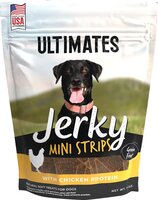
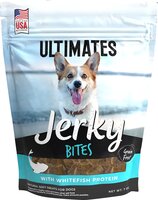
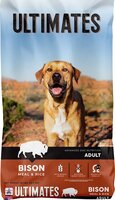
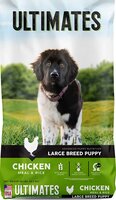
Top Rated Adirondack Recipes
